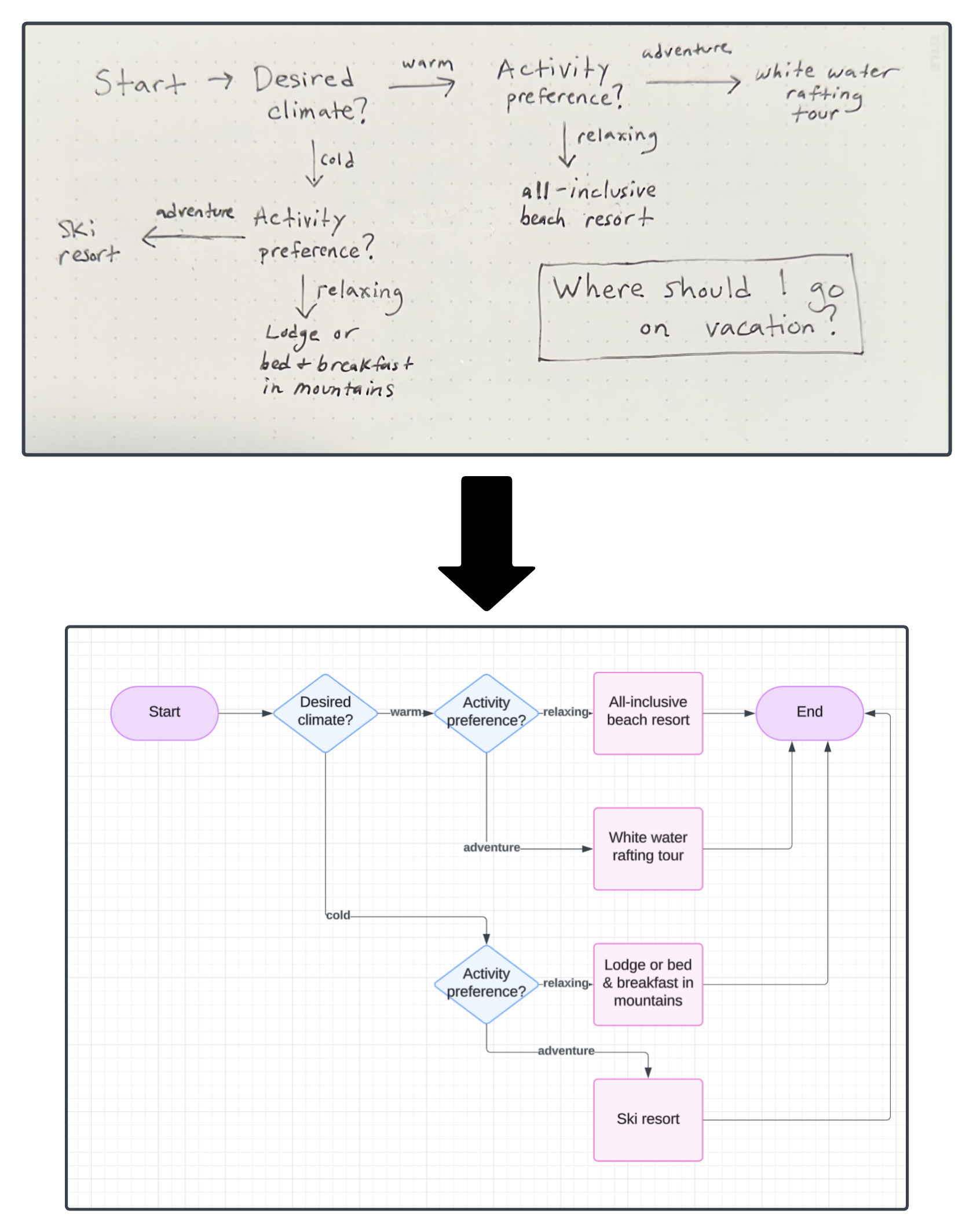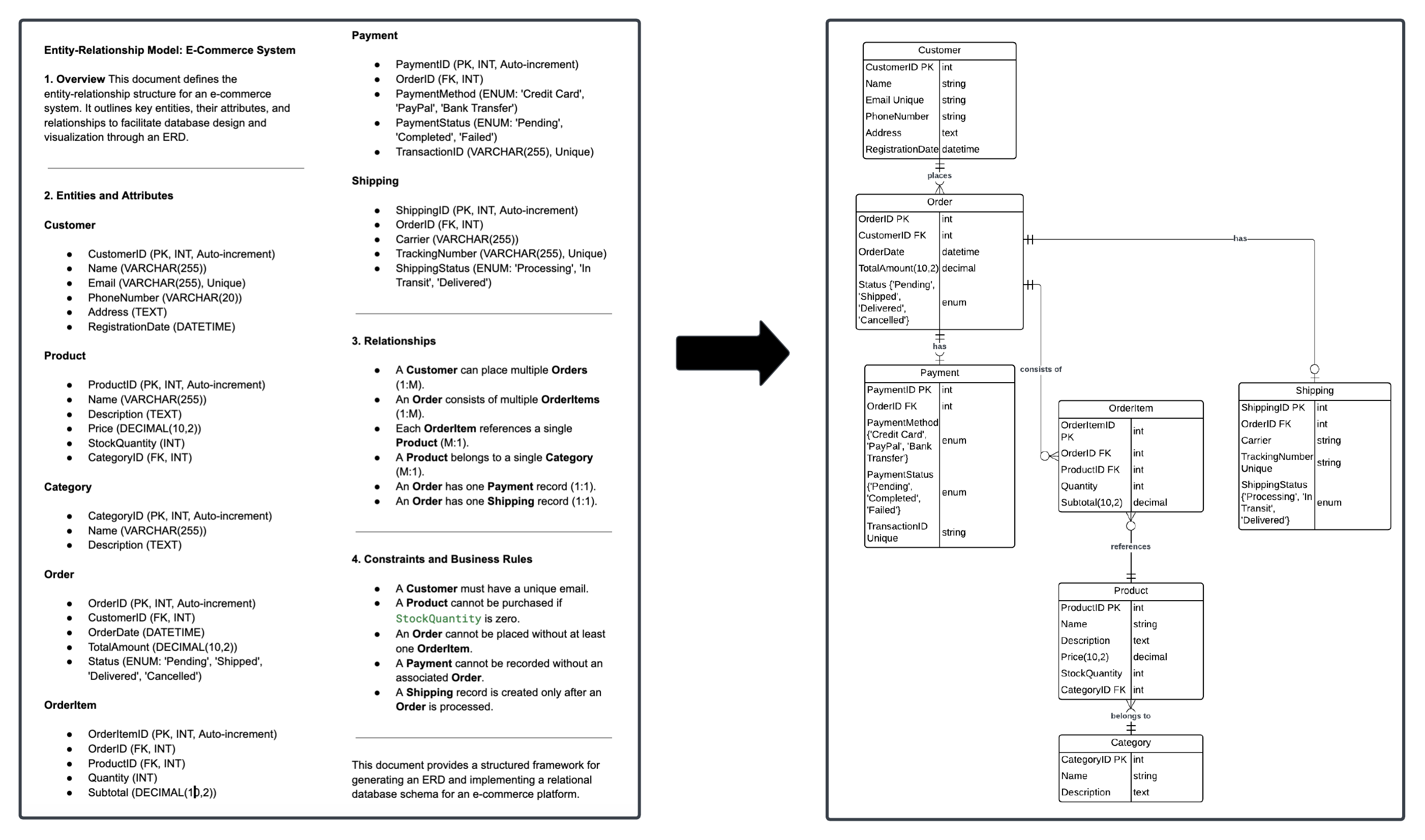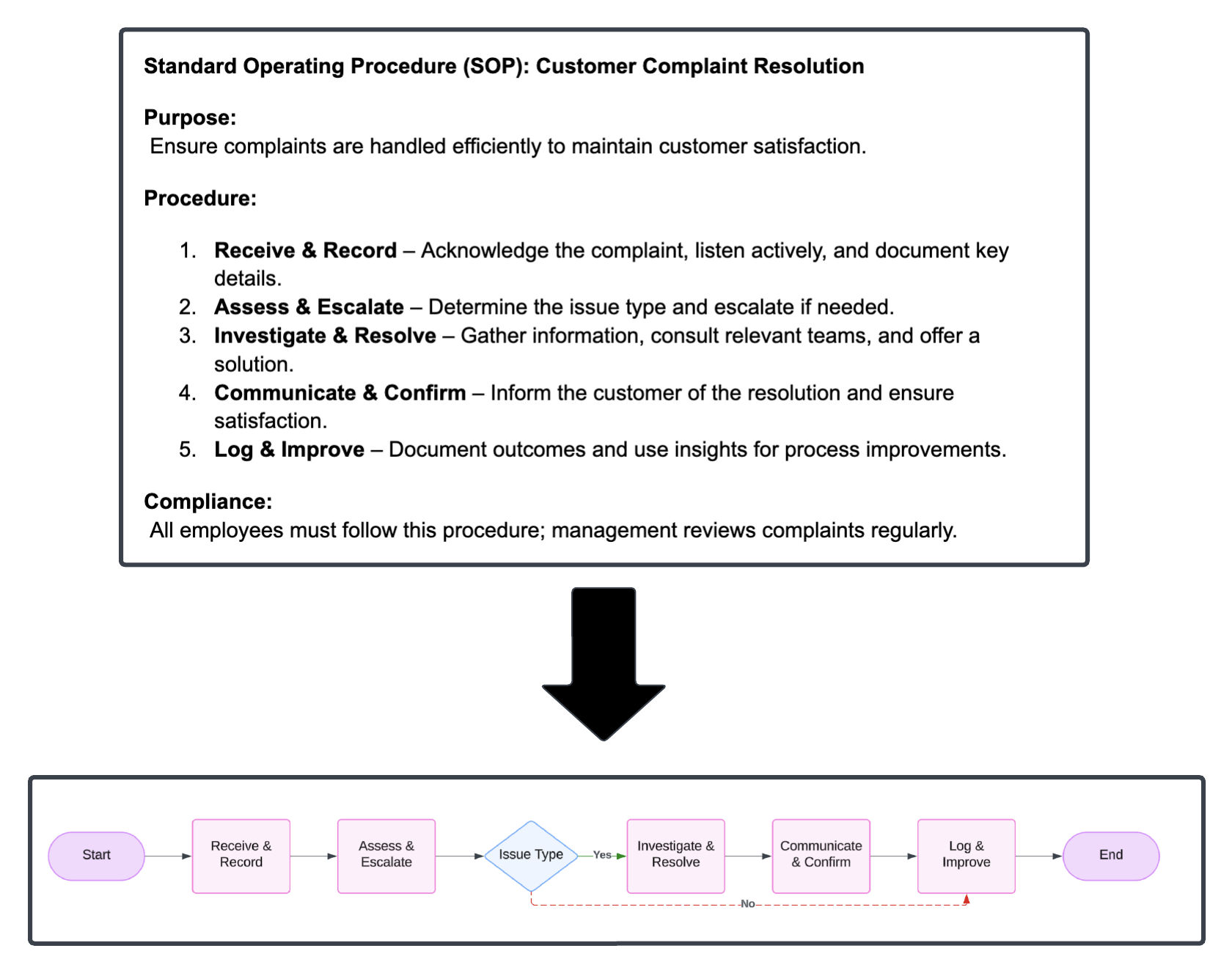Generating a diagram in Lucidchart with AI makes it easier than ever to bring your ideas to life. You can even attach an image, TXT, or PDF file to help the AI create even more accurate and detailed diagrams. Here are three key use cases where adding a file can improve your results:
Convert hand-drawn sketches into digital diagrams
Have a whiteboard sketch or a rough diagram on paper? Uploading an image of your drawing helps AI interpret your structure and translate it into a polished Lucidchart diagram. This is great for brainstorming sessions where you want to quickly digitize ideas.

Visualize complex data from reports
If you're working with a technical document, project report, or system architecture overview, attaching a TXT file or PDF allows AI to pull key entities, relationships, and processes to create a clear, structured visualization. This saves time and ensures nothing important is missed.
By attaching supporting files, you provide AI with more context, leading to smarter and more precise diagram generation. Try it out and see how AI can transform your documents into dynamic visuals!

Streamline workflow documentation
If your team follows a specific workflow or standard operating procedure (SOP), uploading a TXT or PDF file with step-by-step instructions helps AI generate a process flow diagram automatically. This is especially useful for onboarding new employees or documenting internal procedures without manually building the diagram from scratch.

Have you used file attachments to enhance AI-generated diagrams? Share your experience and feedback in the comments! 🚀


